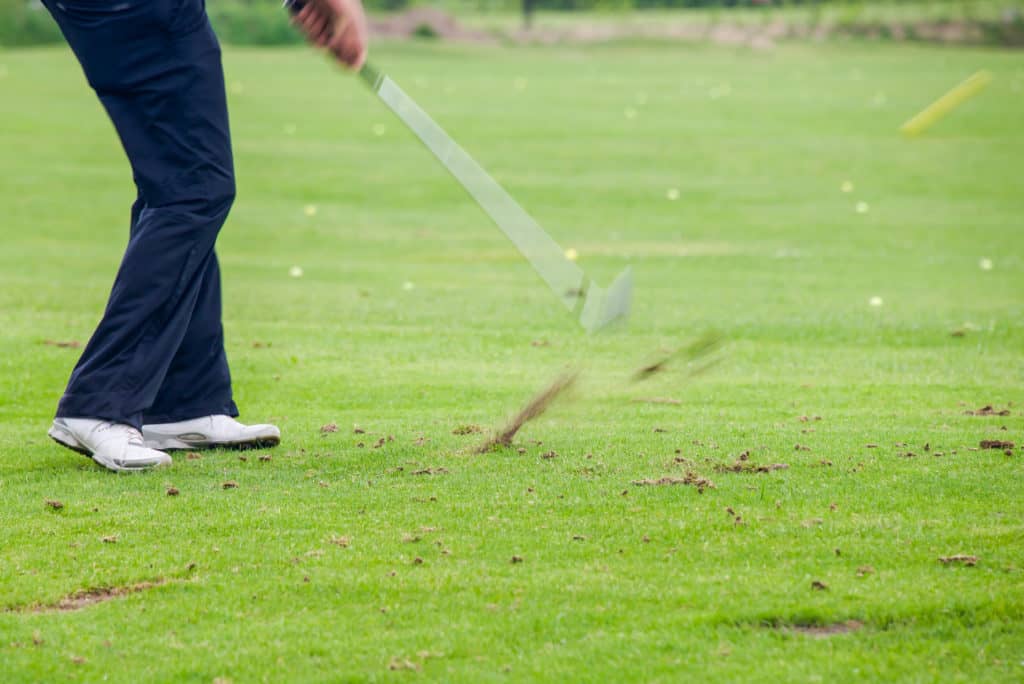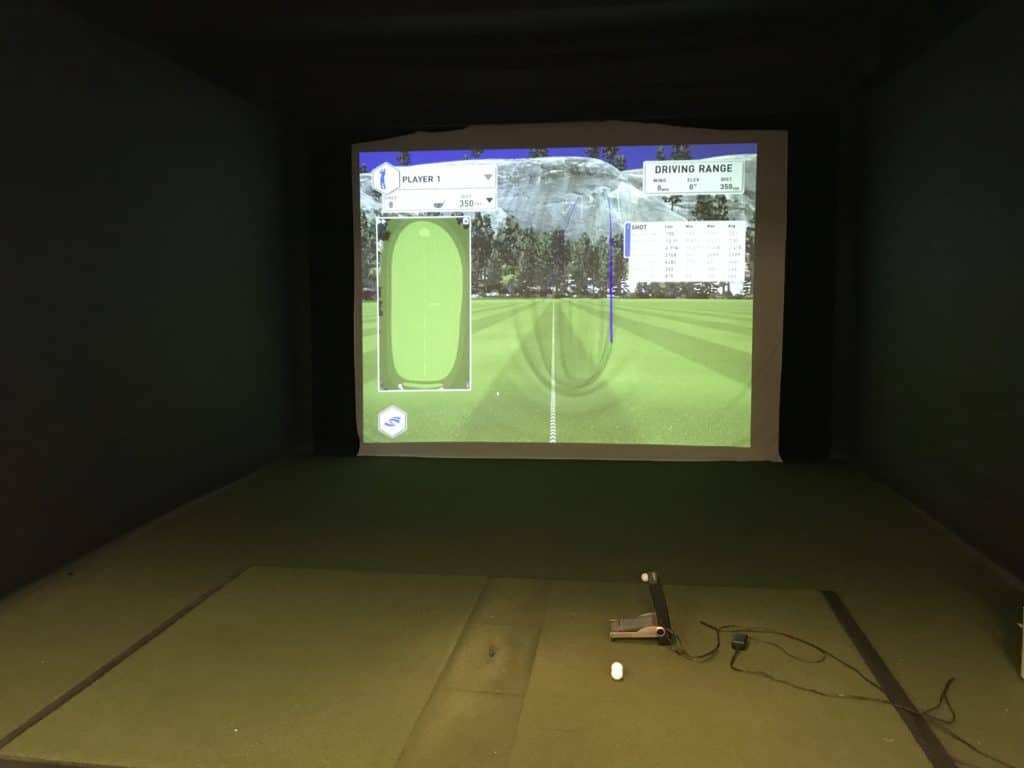The golf swing journey for consistency can be mind boggling.
We have all been there! Does either situation sound familiar?
Situation 1: You are playing great and all of a sudden somewhere between the 7th and 15th hole you lose your swing. It might last 1-2 shots, 1-2 holes or maybe the rest of the round. Sometimes you find your swing again and finish the strong and other times you leave the course completely frustrated.
Situation 2: You play great one day and the very next you head to the course and it feels like you have never golfed before. Every shot is nothing like the day before you no matter what you do that day, you just can’t seem to find your swing!
Whether you lose your swing mid round or between two rounds of golf, this can be rather frustrating and mind boggling. More than likely when a golfer struggles, the issues come down to one of the several items listed below.
- The golfer loses low point control of the swing
- The golfer loses control of the start line and curve of the ball
- The golfer loses swing speed and suffers from distance control
- The golfer starts chunking chips
- The golfer starts missing short putts
Golfers that are struggling during a round are often hitting shots that are not crips, shots that are offline or shots that lack distance or with too much distance. When they get around the greens, they might chunk a shot, or make a poor stroke on a putt.
Instead of breaking down every little piece of the swing, we are going to provide some tips and drills to help you find your swing mid round or post round and start playing better golf quickly. The reality is that we are all going to struggle at times, even the professionals do, but we want to limit the length of the frustrating times and return to fun with the game of golf.

Why Does My Golf Swing Fall Apart?
There are many reasons a golf swing might fall apart, but ultimately, the golfer should work on returning to the most basic part of the swing which include: controlling the low point, controlling the start line and curve of the ball and swinging at a consistent speed with each club. The actual reasons could be connected to tempo, grip, stace, feel, balance, improper weight shift, etc.
Instead of diving into every little thing that could be causing the lack of low point control, shot direction and curve, or swing speed issues, we will give you drills to help rebuild your golf swing and to keep it intact during your next round or between rounds.
We believe the four key fundamentals to the game of golf are built around the following:
- The best golfers control their low point 99.9% of the time.
- The best golfers have a consistent start line and a predictable shot shape 70% of the time.
- The best golfers have plenty of speed to play the course.
- The best golfers can save par just about 50% of the time.
These are some benchmarks you can use on your journey to play better and more consistent golf.
Tip #1: Control Your Low Point
The best golfers are able to control their low point in the golf swing, leading to crisp and pure contact on many shots. The worst golfers might only strike the ball solid around 50% of the time. The good news is that this is a skill you can build and improve upon over time. The simple drill is to hit as many golf balls as possible as frequently as possible with the right mindset. Focusing on sending the ball out at a target and having a quality impact position.
Here is a drill to help you control your low point:
- Take some yard paint and paint a 1-2 yard long line.
- Setup with 55% of your weight on your front side.
- Try to hit the target side of the line and see how many times out of 10 you can do this successfully!
- Repeat this drill every day for a month, tracking your progress and your ability to to this successfully in trials of ten.
- You may need to start with half swing and progress to full swings.
If you are struggling, put more weight forward and work on keeping your head still to help control the low point in the swing.
Tip #2: Control your start line and have a predictable curve
The best golfers hit their target line and have a predictable curve over 70% of the time, while the worse golfers might not have any clue or intention on starting the ball on a specific line with a predictable curve and are simply trying to make clean contact and hit the ball in the air. When a golfer can hit a ball solid and start it on a quality line, they improve their chances of playing consistent golf.
Here is a great drill to help develop a stock shot in golf:
Stock Shot Drill
- At the driving range, set up an alignment stick about 6-8 yards in front of you, straight down your target line.
- If you have a second alignment stick, set the stick 3-4 feet right of the first stick (for a draw) or left of the first stick (for a fade).
- Complete your initial assessment see how many times out of 10 you can start the ball to the right or left of your target. Pick one side and measure your game at this point.
- The goal is to eventually get 7 out of 10 shots to start to the correct side and draw back towards the target.
The combination of solid contact (low point control drill) and the ability to hit a stock shot (consistent curve) is the first step in playing consistent golf during a round and from day to day.

Tip #3: Train for Speed
The further you hit the ball, the better chance you have of playing more consistent golf. The analytics are pretty clear on the importance of distance.
My own experience with training for speed has been incredible. 5 years ago my average swing speed was between 98-101. Over the past month I have started to hit the 111-115 range! Yes, you too can gain speed and distance!
Having additional distance gives you confidence on a course and leaves short approach shots. HItting shots from 125-150 yards is easier than hitting approach shots from 175-200 yards all day long!
I would highly recommend checking out SuperSpeed Golf to improve your swing speed!
I spent many years wondering how I can increase my swing speed. Regardless of your current speed levels, there are always new barriers to break!
Check out the Price of SuperSpeed Golf HERE!
The SuperSpeed Training System is based on three different swing speed sticks all weighing at different weights. There is a green club that is 10% lighter than the average driver, the blue club which is 5% lighter and the red club which is actually 5% heavier!
Following their prescribed protocols the golfer completes the training every other day. The total time to complete most of their protocols is between 10-15 minutes. Most people can find the time to make this happen. The golfer will also need a swing radar to measure their progress.
The science behind the SuperSpeed Training System is based on overspeed training. Overspeed training has been around for several decades now and has been used by olympic athletics in the sport of Track and Field.
The science behind this overspeed training is based on the premise that your brain will only allow your body to move as fast as it feels it can stop safely! So, you get to work and swing the clubs as fast as possible, retraining your brain to allow you to swing your driver faster.
For more permanent results, the golfer should continue these training protocols for several months. The initial 5-8% is great and can become more permanent with the right length of training. The golfer can expect to continue to break down barriers every several months at a 1-2% increase.
My own experience has been an increase of 13-17 miles per hour on average from between 98-101 all the way up to 111-115. My goal is to hit the PGA Tour average of 113 mph in the coming months. (Update, I have hit this number in speed training) I will continue to train every other day and watch in amazement as I am hitting drivers longer now than ever before!
Phil Mickelson (a senior golfer now) has been known to increase his swing speed in the past year or so and is close to 120 miles per hour in his swing speed. There are potential results for golfers of all ability levels and age!
Check the current price on SuperSpeed Golf System, here!
| Original Swing Speed | After 4-6 Weeks | New Carry Distance | Total Distance |
| 95 | 102 | 245 | 265 |
| 100 | 108 | 259 | 279 |
| 105 | 113 | 271 | 291 |
| 110 | 118 | 283 | 303 |
Tip #4: Consistent Short Game
The best golfers are able to save par above 50% of the time with the average scratch golfer saving par 54% of the time. The really good news is that a quality short game doesn’t take great athletic ability, power, speed or physical size. Just about any golfer can become a great short game player through practice.
The formula is simple, chip it within a 3-10 foot circle as frequently as possible and become a great putter from 3-10 feet. The practice green is typically free and not very crowded. Maximize your time at the practice green. A short game is much like playing defense in other sports. It is something you can do every round. While you may not know what your full swing will feel like from day to day, you can chip and putt well just about everyday!
Here are some short game resources to help take your game to the next level:
Why Does My Golf Swing Fall Apart: Final Thoughts
Keeping the right mindset is vital in golf. Of course everyone will tell you not to get angry and to stay patient. All while keeping your expectations in check. The bottom line is that if you can hit the ball clean, hit it on your target line and have plenty of swing speed, you will play more consistent golf than the golfer that can’t.
One thing we haven’t touched on is the mental side of the game. We have previously written about what we believe are the three best resources available! Check them out at the link below.
3 Best Mental Golf Game Resources

My Secret To Golf Improvement
Let’s face it, in order to get really good at golf, we must practice frequently. About four years ago, I made the leap and invested in a golf simulator build for my garage. I went with a SkyTrak Launch Monitor and the TGC software and can now play over 100,000 courses including Augusta, Pebble Beach, Bethpage Black, Whistling Straits. St. Andrews and many other of the top 100 courses in the world.
This golf simulator setup, which is more affordable that you might imagine, has been a game changer. I can now play golf everyday of the year regardless of rain, snow, cold weather or time of day. I can practice or play rounds of golf. I can stand in the 11th fairway at Augusta and with the auto-rewind feature I am able to practice my approach shots from various differences.
It is worth checking out through Rain or Shine Golf as they offer some incredible packages along with financing offers that are difficult to beat.
Some direct links to Rain or Shine Golf for pricing and financing:
Take Action – What You Can Do Today to Get Better
What does this mean for you? I believe in the following recipe to get better:
1 – Improve your motion in the golf swing by identifying a golf instructor. Here are some options:
Here is a list of golf instructors that we have reviewed:
2 – Train to swing faster and improve your swing speed. Here are some options:
Looking to gain more Speed and Distance in your swing. Two Options:
3 – Understand course strategy and work to break through your next barrier. Here is a series on breaking through:
We have provided guides on how to break 100, 90, 80 and 70. Check out more below, if interested.
4 – Practice Frequently
Did you know that I build a golf simulator in my garage and have played over 500 rounds of golf on my SkyTrak system? It has been a game changer and one worth checking out. Here are some of my other posts on golf simulators frequently asked questions:
- Is a Golf Simulator Worth It?
- How to Build a Golf Simulator?
- What is the Best Golf Simulator?
- Golf Simulator Accessories?
- How to Build a Golf Simulator for under $7000
- Top 11 Reasons to Buy a SkyTrak
- How to Build a Golf Simulator for Under $1000
- Why Build A Golf Simulator?
- What Space is Needed?
- Can A Golf Simulator Improve My Game?
- How Much Does A Golf Simulator Cost?
- Don’t Forget to Check out our 15 best golf swings of all time.
I am an amateur golfer on a journey to get better, enjoy the game as often as possible and share my passion and knowledge with others. I have coached high school golfers at a high level and have a great passion for the game and want to give back. I enjoy learning about the golf swing and am currently studying to be a certified professional golf instructor. Join me in our journey to get better everyday. Thank you for reading!

